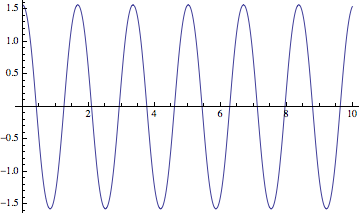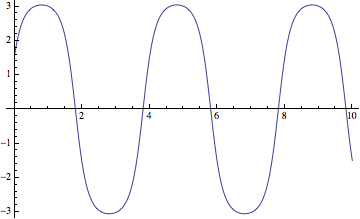To my knowledge there is no closed analytical solution to the pendulum problem.
You could try to do it numerically though:
g=9.81
L=0.5
y=.
y=First[y/.NDSolve[{y''[t]==-(g/L)*Sin[y[t]],y[0]==Pi/2,y'[0]==0},y,{t,0,10}]]
Plot[y[t],{t,0,10}]

This does look like a sine function but it isn't, it becomes especially clear for large exitations:
g=9.81
L=0.5
y=.
y=First[y/.NDSolve[{y''[t]==-(g/L)*Sin[y[t]],y[0]==Pi/2,y'[0]==6.25},y,{t,0,10}]]
Plot[y[t],{t,0,10}]

Hope this helps.